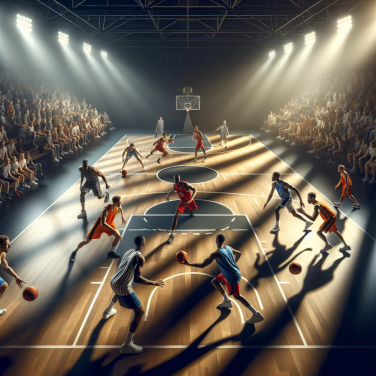Scaling the Heights: Navigating the Thrills and Challenges for Professional Skiers
As exhilarating as it is to fly down a snow-covered mountain with nothing but a set of skis and gravity guiding your way, skiing is a sport that comes with its fair share of thrills and challenges. For professional skiers, these elements are heightened. With higher altitudes, more complex terrain, and greater risk, the demands of professional skiing are unique and challenging. Yet, with the right knowledge, practice, and patience, the path to reaching the summit can become readily manageable.
Professional skiers often face more challenging and unpredictable environments compared to recreational skiers. These environments can include very steep slopes, icy conditions, or obstacles like rocks, ridges, cliffs, or trees. Therefore, mastering the necessary skills to navigate these environments efficiently and safely is significantly important. For instance, turning techniques in difficult terrains or maintaining balance when faced with unexpected obstacles.
Furthermore, strength and conditioning cannot be underestimated. Professionals need to be in optimum physical shape to withstand the physical and mental demands of the sport. Endurance exercises, flexibility training, and strength training form the core of a professional skier's fitness regime. This enhances their ability to perform under tough conditions and significantly reduces the risk of injuries.
Apart from physical preparedness, understanding the snow and the weather patterns is a huge part of a pro skier's journey. Minute details such as the snow's consistency, the slope's angle, or the direction of sunlight can have a severe impact on performance. Hence, learning to read the mountain, the snow, and the climate are essential.
Equipment is another crucial domain for professional skiers. Unlike beginners, they require high-performance equipment like skis cautiously selected considering their weight, height, skiing style, and snow conditions. Regular maintenance of this equipment, including waxing of skis and sharpening of edges, is something a professional cannot afford to ignore if they want optimum performance on the slopes.
Mental resilience is also a significant part of professional skiing. Unlike recreational skiing, factors such as competitions, career advancements and potential injuries add an unavoidable psychological component to the sport. Developing stress management techniques, focusing on mental toughness, and maintaining a positive mindset are essential to handle the pressures of the competitive environment.
On a more advanced level, professional skiers may also face the challenge of negotiating sponsorships and maintaining a public image. They might need to devote time to develop skills that aren't directly related to skiing, such as public speaking, social media engagement, and networking.
Read also:
Unraveling the Origins: Who Invented Soccer?"
Understanding the Basics: An In-Depth Guide for Skiing Beginners
Starting on your skiing journey, it is essential to understand the basic techniques and preparations required for successful skiing. This guide aims to provide beginners clear insights to help them navigate the slopes with confidence.
The first thing to understand is the importance of the right gear. Skis come in different types, suitable for distinctive skiing styles, terrain, and personal preferences. As a beginner, the ideal type is All-Mountain skis designed for all types of skis conditions. Snow conditions determine the type of ski used but mostly stick to beginner skis, which are typically shorter, softer, and have a unique shape that encourages easy turning.
The shoe used, known as ski boots, also matters significantly. Ski boots should fit comfortably, just like a regular shoe. Correct fitting boots are pivotal to maintaining control over the skis, facilitating quick response to changes, and avoiding any discomfort or injury.
Ski helmets are non-negotiable for all skiers, regardless of the skill level. They are instrumental in protecting the skier from severe head injuries, which can be quite common in a high-intensity sport like skiing. Goggles, gloves, appropriate clothing, are other crucial aspects of the skiing gear that beginners should familiarize themselves with.
Once the gear is sorted, understanding the fundamental skiing positions is key. In these essential positions, the body remains bent slightly at the knees and hips, leaning forward with hands out in front. This position, often called the 'athletic position', is fundamental to maintain balance and agility while skiing.
The next basic is the snowplow or wedge. This is the first technique taught to beginners as it paves the way for more advanced maneuvers like turns. Snowplow is essentially pointing the tips of the skis together and pushing the tails apart, forming a V-shape. It helps control speed and enables the skier to stop when needed.
As progress is made, turning techniques become crucial. The most basic turning maneuver is the stem christie, where the uphill ski's tail is pushed out while the downhill ski slides straight. It starts with a snowplow, then the skier gradually steps onto the inner edge of the downhill ski, causing the turn.
Chairlifts are integral to skiing. A beginner must be comfortable getting on and off the chairlift. Advise is to remain calm, swiftly sit when the chair reaches, pull down the safety bar, and always be ready to unload as per the signs.




